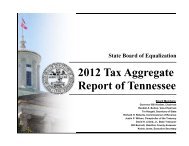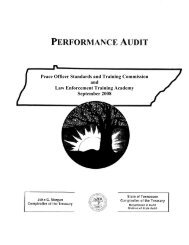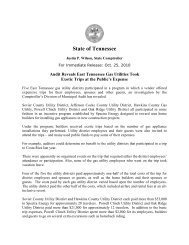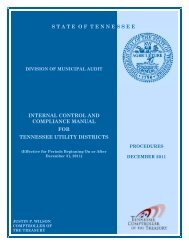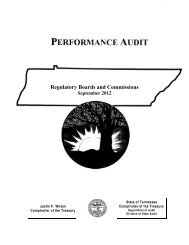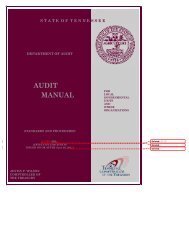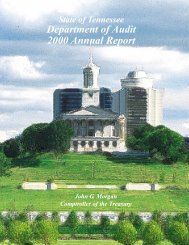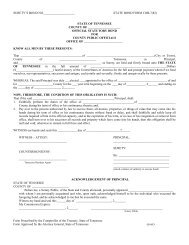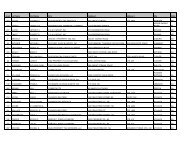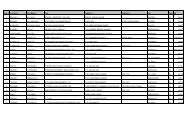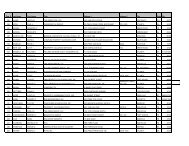On 06/30/2013 the Audit Manual was updated. For a markup copy ...
On 06/30/2013 the Audit Manual was updated. For a markup copy ...
On 06/30/2013 the Audit Manual was updated. For a markup copy ...
You also want an ePaper? Increase the reach of your titles
YUMPU automatically turns print PDFs into web optimized ePapers that Google loves.
Reporting and <strong>Audit</strong>ing Requirements – Medicaid Cost Report Engagements - Section IJ<br />
been revised, a number of Medicaid bulletins have been issued for rule revisions. We have<br />
made revisions in <strong>the</strong> criteria given below where appropriate.<br />
Expenses–Criteria<br />
The cost report footnotes and instructions and <strong>the</strong> nursing facility Level I accounting principles<br />
are <strong>the</strong> primary source for criteria concerning allowable costs. These documents are found in<br />
state rule Chapter 1200-13 and are also available on <strong>the</strong> Secretary of State’s website. If an<br />
item is not addressed in <strong>the</strong> footnotes or apportionment principles, Medicare principles of<br />
retrospective cost reimbursement apply, and reference should be made to <strong>the</strong> Medicare and<br />
Medicaid Guide.<br />
Expenses–Procedures<br />
1. Compare salaries on <strong>the</strong> cost report to <strong>the</strong> provider’s quarterly wage reports. If<br />
<strong>the</strong> wage reports are not available, use <strong>the</strong> home’s payroll records. Variances<br />
exceeding 2% should not be written off as immaterial.<br />
2. Review <strong>the</strong> quarterly wage reports for reasonableness. Any non-owner<br />
employee’s salary that exceeds $20,000 per quarter should be checked for<br />
reasonableness.<br />
a. Note <strong>the</strong> employee’s title and duties.<br />
b. Note <strong>the</strong> percentage of time he or she works.<br />
c. Determine if that employee is overlapping or duplicating <strong>the</strong> duties of<br />
ano<strong>the</strong>r employee.<br />
3. Obtain a signed statement from owner-employees or <strong>the</strong>ir relatives, stating <strong>the</strong>ir<br />
duties, percentage of time working, and compensation, including all fringe<br />
benefits. This data is <strong>the</strong>n used to test <strong>the</strong> accuracy of <strong>the</strong> maximum allowable<br />
salary limits for <strong>the</strong> provider. The rules for applying <strong>the</strong> salary limits are given<br />
in <strong>the</strong> cost report apportionment principles.<br />
4. Select transactions from o<strong>the</strong>r expense accounts for review. The transactions<br />
selected for review should cover <strong>the</strong> entire examination period, if feasible.<br />
Describe <strong>the</strong> method for selecting <strong>the</strong> transactions reviewed.<br />
5. Scan <strong>the</strong> ledgers and journals for unusual items.<br />
6. <strong>For</strong> <strong>the</strong> selected test transactions, examine <strong>the</strong> paid check and invoice.<br />
Determine if <strong>the</strong> expense is allowable.<br />
7. If this is <strong>the</strong> first cost report, verify that property is properly recorded at cost and<br />
is present at <strong>the</strong> facility.<br />
IJ-3



